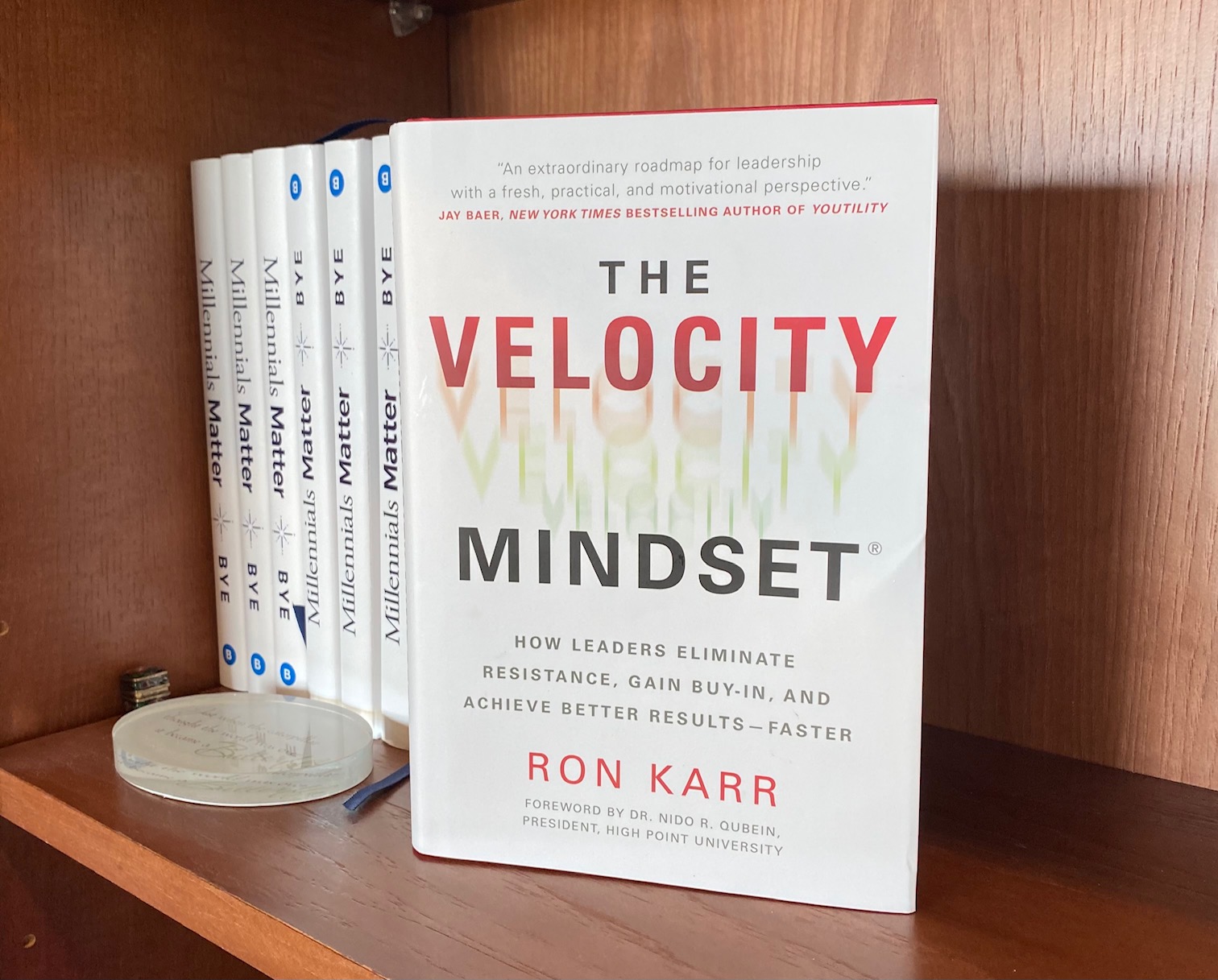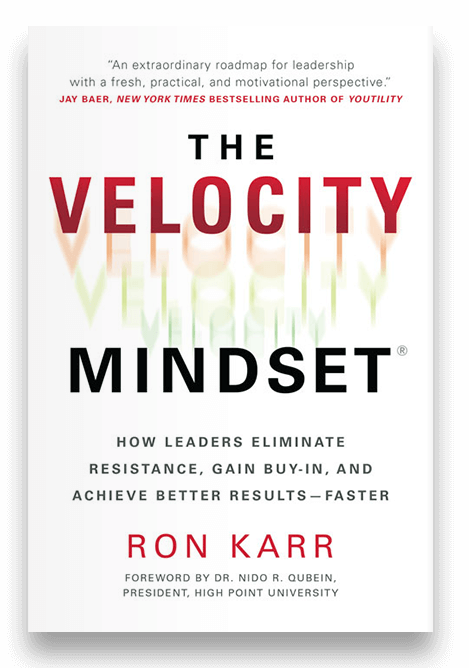
Cracking the Leadership Code to Improve Your Sales Strategy
As we discuss Sales Strategy, it’s important that we talk about Leadership. Thank you to Ron Karr, author of The Velocity Mindset® for sharing this great article and for doing all the work to bring this sales leadership resource to fruition!
When you hear the word leadership, what’s the first thing that pops into your head? Usually, it’s the qualities of a good leader i.e., integrity, good communication skills, managerial competence. These are all good things, but they mainly describe the how of leadership—its features.
When it comes to the what, real leadership is all about making other people successful beyond their wildest dreams.
This definition has fueled my mission as a sales and leadership coach. Sales professionals who genuinely concern themselves with their prospect’s success are far more likely to succeed than those who recite features and make the conversation all about themselves. But this definition goes far beyond sales; it applies to leaders of every kind.
What would the world be like if everyone acted like a leader? What would happen if everyone were focused more on the success of others?
I’m talking about a person’s disposition, not their position within a company or organization. With or without a formal title, real leaders have something inside that drives their behavior. It drives them to influence those around them.
Leaders create their own environment for success by getting the most out of the people they lead. This happens not by force but by tapping into individual wants and motivations. A leader knows the strengths and weaknesses of all the players and is driven to help them succeed, no matter the size or composition of the team.
Whether you’re a CEO, an entrepreneur, a sales executive, or you don’t have any leadership title at all, you can still become a leader. It does involve certain kinds of risk, and a vision and passion for something important, but it is possible. With the right mindset, it’s even likely.
Instead of avoiding or moaning about life’s problems, I believe you can attain the right mindset for genuine, effective leadership. In the process, you can also accomplish not only your own best outcomes but those of the people around you. This approach, which I have for years applied successfully in the world of sales, is called the Velocity Mindset®.
Velocity isn’t something that happens easily or overnight. Some people have good natural instincts, but that doesn’t automatically make them great leaders. Vince Lombardi got it partly right when he said, “Leaders aren’t born, they are made. And they are made just like anything else, through hard work.”
But just embracing hard work is not enough, especially if you focus just on the “whirlwind,” those everyday tasks that don’t support your purpose. You know the saying: “We’re too busy mopping the floor to turn off the faucet.” Experience will tell you, hopefully, sooner rather than later, that speed without direction is not a formula for leadership. It’s just a recipe for burnout.
Here’s an example from my consulting practice: a top, high-performing sales rep whom we’ll call Bob had been promoted to national account management, but things were not going well. As a sales professional, Bob had been focused on his objective, which was to meet or exceed his quarterly numbers. He was really good at it; his own efforts supported that goal. He’d drop everything to fix a problem, please the customer, and close deals at a remarkable rate. But when he was promoted, he didn’t automatically transform into a leader.

A leader’s job is not to do other people’s jobs. Their job is to make it possible for others to do their jobs well. A leader’s success depends on the sum of others’ efforts. By playing the hero and fulfilling his ego, Bob relied on his own efforts and simultaneously limited the efforts of others. He had plenty of speed but in the wrong direction. He failed to PAUSE and ask:
What is my job?
How is my objective different than what it was?
What does success mean—not just for me but for those I lead?
A sales manager, or any other leader, must identify and assess gaps, coach people in addressing them, and monitor their progress. Imagine how much more velocity his team would have had if Bob had coached them in doing their jobs well, even when he was not there. A leader’s destination is not static; it always changes, so we need to constantly check to make sure of our heading. We need to master the art of the PAUSE, asking if the objective has changed and making sure our actions still support them.
About The Author: Ron Karr has worked with leaders of organizations on six continents to eliminate risk, gain buy-in and achieve better results faster with the Velocity Mindset®. For the past 30 years, his presentations and advisory services have generated over a billion dollars in incremental revenues for his clients. Ron is the author of five books including the bestseller, Lead, Sell or Get Out of the Way and his latest, The Velocity Mindset® on sale at Amazon now.
 Frustrated that your sales team isn’t delivering piping-hot sales results?
Frustrated that your sales team isn’t delivering piping-hot sales results?
We invite you to schedule a free virtual coffee meeting with us. No charge, no obligation. Just a one-on-one 45 minutes to talk through what challenges are happening, receive personal tips, advice, and next steps on how to solve those challenges. To schedule, email me at danita@DanitaBye.com



No Comments